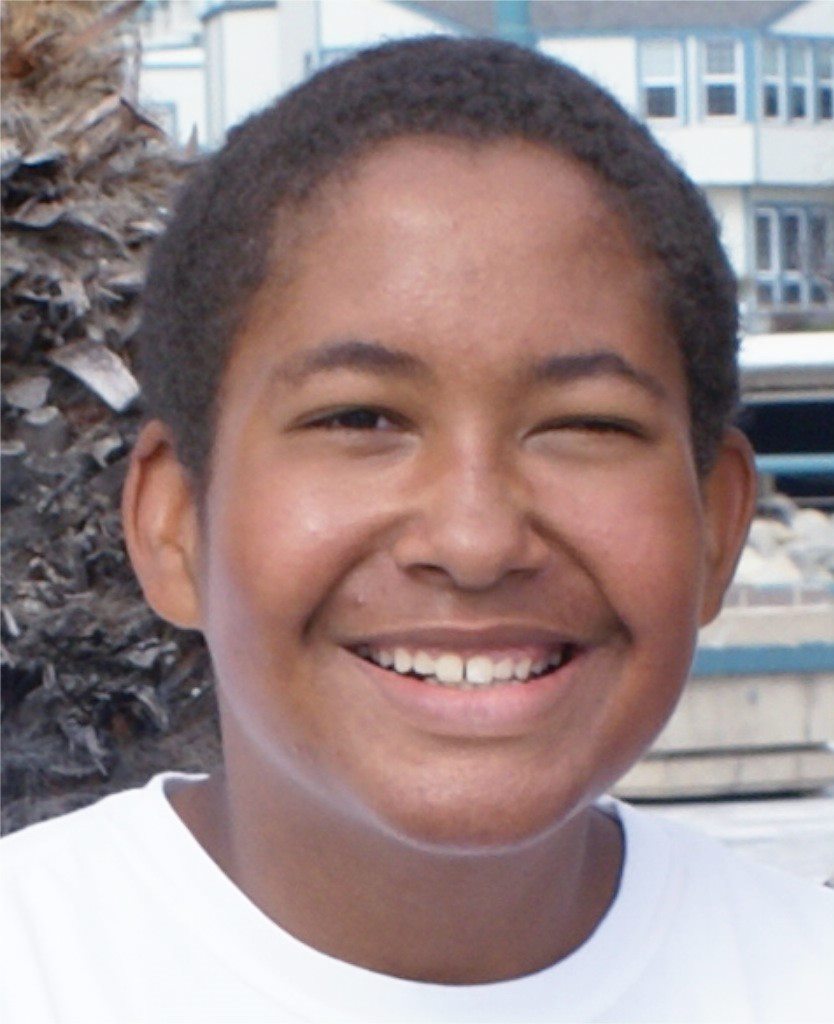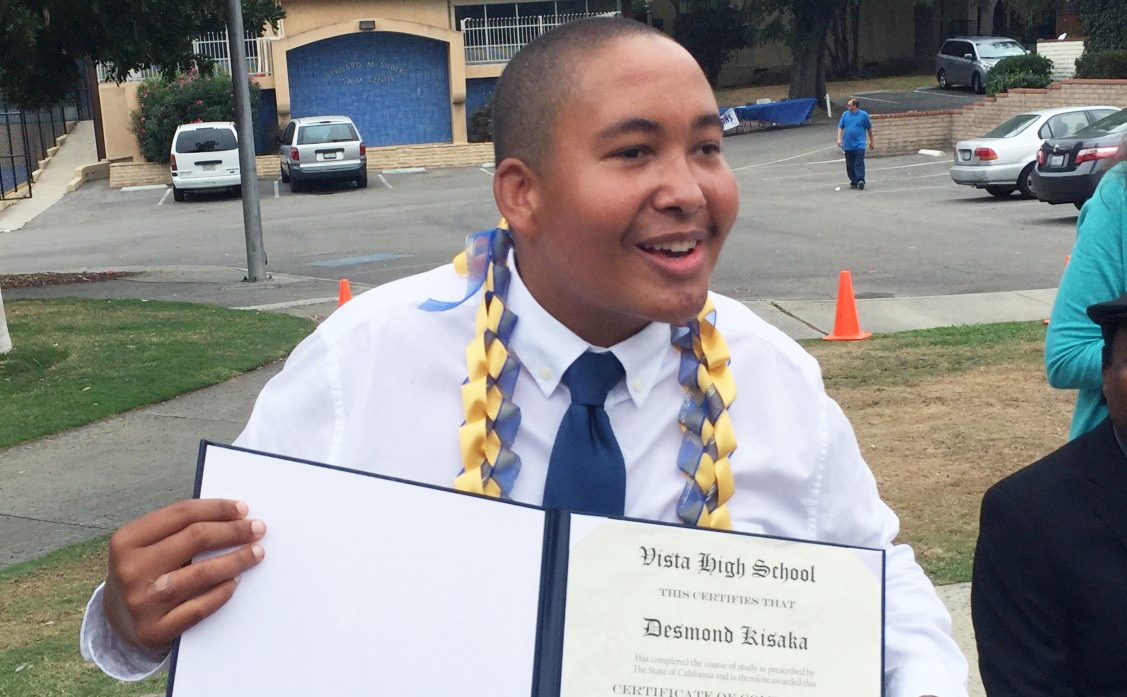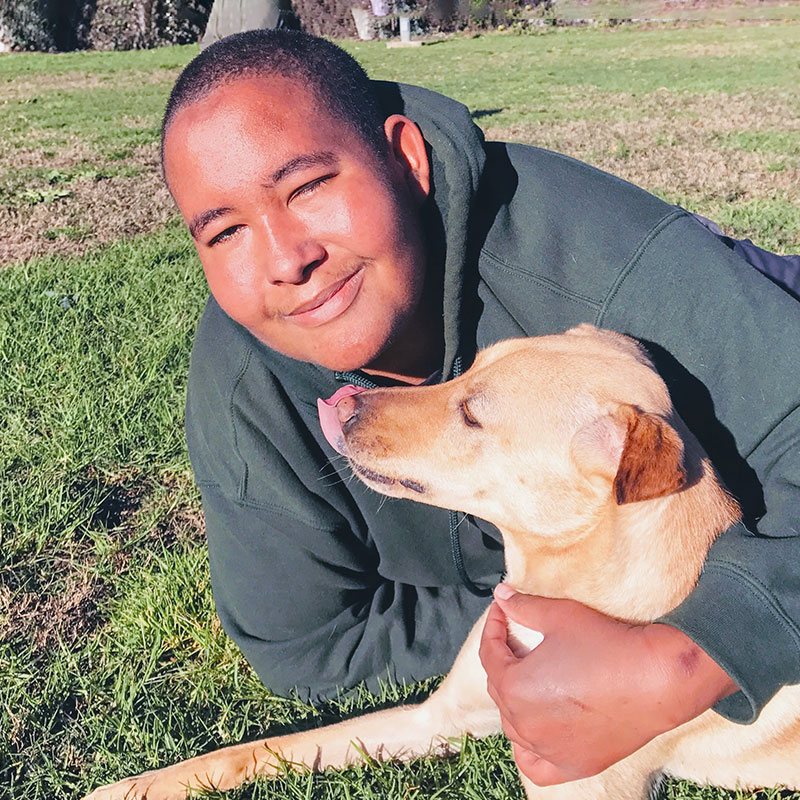Dinner was over, that meant only one thing — it was time for bed. Desmond looked at Tai and they started their routines. First was Tai’s turn. Desmond walked him to the door, opened it wide and Tai skirted out, his tan fuzzy tail whipping behind him. Tai is a happy dog — a mixed breed of yellow lab and Pharaoh hound — and Desmond’s best friend. Desmond waited for his buddy Tai, who popped back in a moment later, gave a little bark and they were off to the next phase of bedtime.

Desmond, 20, is a patient of the Stramski Children’s Developmental Center at MemorialCare Miller Children’s & Women’s Hospital Long Beach which provides comprehensive care for children — from birth to age 21 — for behavioral and developmental conditions, including sleep conditions. Desmond was diagnosed with Prader–Willi syndrome (PWS) when he was about 3-years-old.
PWS is a genetic disorder that occurs in approximately one out of every 15,000 births. PWS is usually caused by the deletion of a part of chromosome 15. In infancy, PWS is characterized by weak muscle tone, delayed development, feeding difficulties and other complex issues. PWS can affect growth, cognitive function and behavior that includes a hallmark characteristic of insatiable hunger and slowed metabolism which can lead to excessive eating and obesity, which in turn can result in difficulties breathing during sleep.
Throughout his life, Desmond’s parents worked closely with his care team through physical and behavioral therapies, and growth hormone treatment. Physical therapy helped Desmond restore his muscle strength and function through exercise. Behavioral therapy provided him with support and essential tools to use Desmond’s strengths and interests to help motivate him to achieve goals and activities.
As part of Desmond’s care, he receives a periodic polysomnogram, or sleep study, which is the most accurate test used to diagnose breathing problems during sleep. During a sleep study, a patient’s brain waves, heart rate, breathing, oxygen levels in the blood, as well as eye and leg movement, are recorded.
At 18, during a routine sleep study, Desmond was diagnosed with sleep apnea and it was recommended he try continuous positive airway pressure (CPAP) therapy to improve his quality of sleep.
Desmond and his parents worked closely with Gary Feldman, M.D., medical director, Stramski Children’s Developmental Center, Miller Children’s & Women’s.
“We approach the use of the CPAP machine like a video game,” says Dr. Feldman. “As the child progresses with each level — starting off with getting used to the mask, then gradually increasing use of the CPAP machine over time — we encourage rewarding them for their hard work.”

Desmond’s adjustment to sleep with CPAP therapy was a gradual process. Desmond worked to increase the use of the CPAP machine by an hour every few weeks. There were setbacks, but together with his parent’s support and guidance from the Stramski Children’s Developmental Center, they plugged along. After a little over a year, Desmond was able to sleep through the night with his CPAP machine.
Over time, the CPAP machine became part of Desmond’s bedtime routine.
Even at 20, Desmond still looks forward to visiting the Stramski Children’s Developmental Center and can’t wait to see Dr. Feldman. Miller Children’s & Women’s offers pediatric sleep consultations, sleep studies, and a family-centered environment where the care team partners with families to identify and manage sleep disorders. The care team at the Stramski Children’s Developmental Center still celebrate him and his successes with a reward.
Back at home, Desmond continues on his daily bedtime routine. He washes his face, hands and brushes his teeth. His mom, Mary, walks in to help him floss. He looks over and sees Tai waiting for him patiently.
Desmond walks into the hallway, his eyes meet Tai’s and they jet off! They race to be first to the bedroom. Desmond triumphs. In his excitement, he laughs, reaches down and gives Tai a good belly rub. Tai’s entire body wags with joy. It’s time for bed.
Desmond fits his CPAP headgear on while Tai curls up into his doggy bed. Desmond’s mom and dad walk in, tuck him in and together say a good night prayer. Desmond’s CPAP machine hums along, soon he will lull off to safe, sound and healthy sleep.

